
Takara_Soong
-
Content Count
10,256 -
Joined
-
Last visited
Posts posted by Takara_Soong
-
-
-
August 19 marks the anniversary of Gene Roddenberry's birth. Please post your thoughts on the man, his work and how they affected you in this thread.
From Roddennberry.com:
Gene Roddenberry
Although Gene Roddenberry passed away October 24, 1991, his legacy remains as Star Trek continues to flourish and grow, as there has been 10 movies, and 7 television series, all of which maintained his vision of the future.
Gene Roddenberry, often affectionately referred to as the “Great Bird of the Galaxy,” led a life as colorful and exciting as almost any high-adventure fiction. He was born in El Paso, Texas, on August 19, 1921, and nearly escaped death as a toddler, when a house fire almost took Gene’s life, as well as his siblings, Bob, Doris, and their mother, but a milkman came along and woke them in time to avoid any injuries.
Gene spent his boyhood in Los Angeles, where he later studied three years of policemanship and then transferred his academic interest to aeronautical engineering and qualified for a pilot's license. He volunteered for the U.S. Army Air Corps in the fall of 1941 and was ordered into training as a flying cadet when the United States entered World War II. As a Second Lieutenant, Roddenberry was sent to the South Pacific where he entered combat at Guadalcanal, flying B-17 bombers out of the newly captured Japanese airstrip, which became Henderson Field. He flew missions against enemy strongholds at Bougainville and participated in the Munda invasion. He was decorated with the Distinguished flying Cross and the Air Medal.
It was while in the South Pacific, that Mr. Roddenberry began to write. He sold stories to flying magazines, and later poetry to publications, including The New York Times. He even wrote a song lyric "I Wanna Go Home", which became a popular song during the war.
At war's end, he joined Pan American World Airways. It was on a flight from Calcutta that his plane lost two engines and caught fire in flight, crashing at night in the Syrian desert. As the senior surviving officer, Roddenberry sent two Englishmen swimming across the Euphrates River in quest of the source of a light he had observed just prior to the crash impact. The Englishmen reached a Syrian military outpost, which sent a small plane to investigate. Roddenberry returned with the small plane to the outpost, where he broadcast a message that was relayed to Pan Am, which sent a stretcher plane to the rescue. Roddenberry later received a Civil Aeronautics commendation for his efforts during and after the crash.
Roddenberry continued flying until he saw television for the first time. Correctly estimating television's future, he realized that the new medium would need writers and decided that Hollywood's film studios would soon dominate the new industry. He acted immediately, left his flying career behind and went to Hollywood, only to find the television industry still in its infancy, with few openings for inexperienced writers. At a friend's suggestion, he joined the Los Angeles Police Department, following in his father's footsteps and gaining experiences which would be valuable to a writer.
It wasn't until 1966 when Roddenberry created and produced Star Trek, that he found his voice in Hollywood. The first of the two pilots were pronounced "too cerebral" by the network and rejected. Once on the air, however, Star Trek developed a loyal following as viewers grew to love the Starship Enterprise and its crew, which included the heroic Captain Kirk and the logical Vulcan, Mr. Spock.
On August 10, 1966, Gene wrote:
Space...the final frontier. These are the voyages of the Starship Enterprise, its five-year mission
....to explore strange new worlds
...to seek out new life and new civilizations
...to boldly go where no man has gone before.
This set the tone and mood for an entire generation of Star Trek fans.
Roddenberry unwittingly unleashed a phenomenon in which Star Trek enthusiasts became a veritable cult, numbering physicists, aerospace engineers, housewives, senators, children, teachers and intellectuals among its devotees (affectionately known as "Trekkies," and later, "Trekkers"). The show went outside television to win science fiction's coveted Hugo Award and then spawned an animated spin-off, as well as a series of feature films.
While making Star Trek, Roddenberry's reputation as a futurist began to grow. His papers and lectures earned him high professional regard as a visionary. He spoke on the subject at NASA meetings, the Smithsonian Institution, Library of Congress gatherings, and top universities.
Star Trek was so wildly popular that it has since become the first television series to have an episode preserved in the Smithsonian, where an 11-foot model of the U.S.S. Enterprise is also exhibited on the same floor as the Wright brother's original airplane and Lindbergh's "Spirit of St. Louis." In addition to the Smithsonian honors, NASA's first space shuttle was named Enterprise, in response to hundreds of thousands of letters from fans demanding that the shuttle be named after the beloved starship.
On September 4, 1986, Gene Roddenberry's fans presented him with a star on the Hollywood Walk of Fame, the first writer/producer to be so honored. Star Trek: The Next Generation, in its first year in syndication, was awarded with the 1987 Peabody Award for the "Best of the Best." The series also garnered many of the prestigious Emmy awards throughout its seven-year run. In February 1990, the March of Dimes honored Roddenberry with the Jack Benny Memorial Award of lifetime achievement.
On Thursday, October 24, 1991 Gene Roddenberry passed away and a world not so far away mourned the loss of one of television's foremost pioneers. Sadly, Gene died within 48 hours of screening Star Trek VI: The Undiscovered Country (1991), the last Trek that revolved around his original characters. At the time of his passing, Gene was survived by his wife Majel Barrett ("Nurse Chapel" from Star Trek and "Lwaxana Troi" in Star Trek: The Next Generation) and their 17-year-old son, Gene Roddenberry, Jr., his two grown daughters from a previous marriage, as well as two grandchildren.
In addition to having served as executive consultant on Star Trek feature productions, Roddenberry added "novelist" to his writing repertoire. His novelization of "Star Trek: The Motion Picture" (Pocket Books, 1979) sold close to a million copies and was ranked number one on the national bestseller lists for many weeks.
Special thanks to David Alexander, author of “Star Trek Creator,” from which parts of the above biography were taken.
-
August 19 marks the anniversary of Gene Roddenberry's birth. Please post your thoughts on the man, his work and how they affected you.
From Roddennberry.com:
Gene Roddenberry
Although Gene Roddenberry passed away October 24, 1991, his legacy remains as Star Trek continues to flourish and grow, as there has been 10 movies, and 7 television series, all of which maintained his vision of the future.
Gene Roddenberry, often affectionately referred to as the “Great Bird of the Galaxy,” led a life as colorful and exciting as almost any high-adventure fiction. He was born in El Paso, Texas, on August 19, 1921, and nearly escaped death as a toddler, when a house fire almost took Gene’s life, as well as his siblings, Bob, Doris, and their mother, but a milkman came along and woke them in time to avoid any injuries.
Gene spent his boyhood in Los Angeles, where he later studied three years of policemanship and then transferred his academic interest to aeronautical engineering and qualified for a pilot's license. He volunteered for the U.S. Army Air Corps in the fall of 1941 and was ordered into training as a flying cadet when the United States entered World War II. As a Second Lieutenant, Roddenberry was sent to the South Pacific where he entered combat at Guadalcanal, flying B-17 bombers out of the newly captured Japanese airstrip, which became Henderson Field. He flew missions against enemy strongholds at Bougainville and participated in the Munda invasion. He was decorated with the Distinguished flying Cross and the Air Medal.
It was while in the South Pacific, that Mr. Roddenberry began to write. He sold stories to flying magazines, and later poetry to publications, including The New York Times. He even wrote a song lyric "I Wanna Go Home", which became a popular song during the war.
At war's end, he joined Pan American World Airways. It was on a flight from Calcutta that his plane lost two engines and caught fire in flight, crashing at night in the Syrian desert. As the senior surviving officer, Roddenberry sent two Englishmen swimming across the Euphrates River in quest of the source of a light he had observed just prior to the crash impact. The Englishmen reached a Syrian military outpost, which sent a small plane to investigate. Roddenberry returned with the small plane to the outpost, where he broadcast a message that was relayed to Pan Am, which sent a stretcher plane to the rescue. Roddenberry later received a Civil Aeronautics commendation for his efforts during and after the crash.
Roddenberry continued flying until he saw television for the first time. Correctly estimating television's future, he realized that the new medium would need writers and decided that Hollywood's film studios would soon dominate the new industry. He acted immediately, left his flying career behind and went to Hollywood, only to find the television industry still in its infancy, with few openings for inexperienced writers. At a friend's suggestion, he joined the Los Angeles Police Department, following in his father's footsteps and gaining experiences which would be valuable to a writer.
It wasn't until 1966 when Roddenberry created and produced Star Trek, that he found his voice in Hollywood. The first of the two pilots were pronounced "too cerebral" by the network and rejected. Once on the air, however, Star Trek developed a loyal following as viewers grew to love the Starship Enterprise and its crew, which included the heroic Captain Kirk and the logical Vulcan, Mr. Spock.
On August 10, 1966, Gene wrote:
Space...the final frontier. These are the voyages of the Starship Enterprise, its five-year mission
....to explore strange new worlds
...to seek out new life and new civilizations
...to boldly go where no man has gone before.
This set the tone and mood for an entire generation of Star Trek fans.
Roddenberry unwittingly unleashed a phenomenon in which Star Trek enthusiasts became a veritable cult, numbering physicists, aerospace engineers, housewives, senators, children, teachers and intellectuals among its devotees (affectionately known as "Trekkies," and later, "Trekkers"). The show went outside television to win science fiction's coveted Hugo Award and then spawned an animated spin-off, as well as a series of feature films.
While making Star Trek, Roddenberry's reputation as a futurist began to grow. His papers and lectures earned him high professional regard as a visionary. He spoke on the subject at NASA meetings, the Smithsonian Institution, Library of Congress gatherings, and top universities.
Star Trek was so wildly popular that it has since become the first television series to have an episode preserved in the Smithsonian, where an 11-foot model of the U.S.S. Enterprise is also exhibited on the same floor as the Wright brother's original airplane and Lindbergh's "Spirit of St. Louis." In addition to the Smithsonian honors, NASA's first space shuttle was named Enterprise, in response to hundreds of thousands of letters from fans demanding that the shuttle be named after the beloved starship.
On September 4, 1986, Gene Roddenberry's fans presented him with a star on the Hollywood Walk of Fame, the first writer/producer to be so honored. Star Trek: The Next Generation, in its first year in syndication, was awarded with the 1987 Peabody Award for the "Best of the Best." The series also garnered many of the prestigious Emmy awards throughout its seven-year run. In February 1990, the March of Dimes honored Roddenberry with the Jack Benny Memorial Award of lifetime achievement.
On Thursday, October 24, 1991 Gene Roddenberry passed away and a world not so far away mourned the loss of one of television's foremost pioneers. Sadly, Gene died within 48 hours of screening Star Trek VI: The Undiscovered Country (1991), the last Trek that revolved around his original characters. At the time of his passing, Gene was survived by his wife Majel Barrett ("Nurse Chapel" from Star Trek and "Lwaxana Troi" in Star Trek: The Next Generation) and their 17-year-old son, Gene Roddenberry, Jr., his two grown daughters from a previous marriage, as well as two grandchildren.
In addition to having served as executive consultant on Star Trek feature productions, Roddenberry added "novelist" to his writing repertoire. His novelization of "Star Trek: The Motion Picture" (Pocket Books, 1979) sold close to a million copies and was ranked number one on the national bestseller lists for many weeks.
Special thanks to David Alexander, author of “Star Trek Creator,” from which parts of the above biography were taken
-
-
-
-
-
-
These are fantastic.
-
From Associated Press:
Guitar legend-inventor Les Paul dies at age 94By NEKESA MUMBI MOODY
NEW YORK — Les Paul, the guitar virtuoso and inventor who revolutionized music and created rock 'n' roll as surely as Elvis Presley and the Beatles by developing the solid-body electric guitar and multitrack recording, died Thursday at age 94.
Known for his lightning-fast riffs, Paul performed with some of early pop's biggest names and produced a slew of hits, many with wife Mary Ford. But it was his inventive streak that made him universally revered by guitar gods as their original ancestor and earned his induction into the Rock and Roll Hall of Fame as one of the most important forces in popular music.
Paul, who died in White Plains, N.Y., of complications from pneumonia, was a tireless tinkerer, whose quest for a particular sound led him to create the first solid-body electric guitar, a departure from the hollow-body guitars of the time. His invention paved the way for modern rock 'n' roll and became the standard instrument for legends like Pete Townshend and Jimmy Page.
He also developed technology that would become hallmarks of rock and pop recordings, from multitrack recording that allowed for layers and layers of "overdubs" to guitar reverb and other sound effects.
"He was truly the cornerstone of popular music," said Henry Juskiewicz, chairman and CEO of Gibson Guitar, which mass produced Paul's original invention. "He was a futurist, and unlike some futurists who write about it and predict things, he was a guy who actually did things."
Paul remained an active performer until his last months: He put out his very first rock album just four years ago, and up until recently played every week at a New York jazz club.
The news of his death prompted an outpouring of tributes from the music world.
"Les lived a very long life and he got to a lot of his goals, so I'm happy for him in that respect. ... At least he realized that he was a legend in his own time while he was alive," said Richie Sambora, Bon Jovi's guitarist and a friend of Paul's, on Thursday. "He was revolutionary in the music business."
Said Kiss' Paul Stanley: "The name Les Paul is iconic and is known by aspiring and virtuoso guitar players worldwide. That guitar is the cornerstone of a lot of great music that has been made in the last 50 years."
A musician since childhood, he experimented with guitar amplification for years before coming up in 1941 with what he called "The Log," a 4-by-4 piece of wood strung with steel strings.
"I went into a nightclub and played it. Of course, everybody had me labeled as a nut." He later put the wooden wings onto the body to give it a traditional guitar shape.
The use of electric guitar gained popularity in the mid-to-late 1940s.
Leo Fender's Broadcaster was the first mass-produced solid body electric on the market in the late 1940s.
Gibson solicited Paul to create a prototype for a guitar, and began production on the Les Paul guitar in 1952. Townshend of the Who, Steve Howe of Yes, jazz great Al DiMeola and Led Zeppelin's Page all made the Gibson Les Paul their trademark six-string.
The Les Paul series has become one of the most widely used guitars in the music industry. In 2005, Christie's auction house sold a 1955 Gibson Les Paul for $45,600.
Paul was born Lester William Polfuss, in Waukesha, Wis., on June 9, 1915. He began his career as a musician, billing himself as Red Hot Red or Rhubarb Red. He toured with the popular Chicago band Rube Tronson and His Texas Cowboys and led the house band on WJJD radio in Chicago.
In the mid-1930s he joined Fred Waring's Pennsylvanians and soon moved to New York to form the Les Paul Trio, with Jim Atkins and bassist Ernie Newton.
Paul started out as an accompanist, working with key artists until he struck out on his own. His first records were released in 1944 on Decca Records. Later, with Ford, his wife from 1949 to 1962, he earned 36 gold records for hits including "Vaya Con Dios" and "How High the Moon," which both hit No. 1.
He had met Ford, then known as Colleen Summers, in the 1940s while working as a studio musician in Los Angeles. For seven years in the 1950s, Paul and Ford broadcast a TV show from their home in Mahwah, N.J. (Ford died in 1977, 15 years after they divorced).
Paul had made his first attempt at audio amplification at age 13. Unhappy with the amount of volume produced by his acoustic guitar, he tried placing a telephone receiver under the strings. Although this worked to some extent, only two strings were amplified and the volume level was still too low.
By placing a phonograph needle in the guitar, all six strings were amplified, which proved to be much louder. Paul was playing a working prototype of the electric guitar in 1929.
His work on recording techniques began in the years after World War II, when Bing Crosby gave him a tape recorder. Drawing on his earlier experimentation with his homemade recording machine, Paul added an additional playback head to the recorder. The result was a delayed effect that became known as tape echo.
Tape echo gave the recording a more "live" feel and enabled the user to simulate different playing environments.
Paul's next "crazy idea" was to stack together eight mono tape machines and send their outputs to one piece of tape, stacking the recording heads on top of each other. The resulting machine served as the forerunner to today's multitrack recorders. Many of his songs with Ford used overdubbing techniques that Paul had helped develop.
"I could take my Mary and make her three, six, nine, 12, as many voices as I wished," he recalled. "This is quite an asset." The overdubbing technique was highly influential on later recording artists such as the Carpenters.
Paul's use of multitrack recording was unique: Before he did it, most recordings were made on a single tape. By recording each element separately, from the vocals to instrumentation on different tracks, they could be mixed and layered, adding to the richness in sound.
"In the old days, if you only had one track, you put a microphone in the middle of the music and hope for the best," Juskiewicz said.
In 1954, Paul commissioned the first eight-track tape recorder, later known as "Sel-Sync," in which a recording head could simultaneously record a new track and play back previous ones.
In the late 1960s, Paul retired from music to concentrate on his inventions. His interest in country music was rekindled in the mid-'70s and he teamed with Chet Atkins for two albums. The duo were awarded a Grammy for best country instrumental performance of 1976 for their "Chester and Lester" album.
In 2005, he released the Grammy-winning "Les Paul & Friends: American Made, World Played," his first album of new material since those 1970s recordings and his first official rock CD. Among those playing with him: Peter Frampton, Jeff Beck, Eric Clapton and Richie Sambora.
"They're not only my friends, but they're great players," Paul told The Associated Press. "I never stop being amazed by all the different ways of playing the guitar and making it deliver a message."
Paul was inducted into the National Inventors Hall of Fame in 2005.
Associated Press writer Luke Sheridan contributed to this report.
-
-
-
-
-
I think it's probably just loafing and watching something you like that makes you feel better, not necessarily Star Trek.I don't know... I used to really like Stephen King but reading The Stand didn't make me feel better when I had the flu. LOL Seriously you're probably right. Nothing makes me feel better when I'm not 100% than watching Trek.
-
-
Continuing what oldfan1 started:
If one is more mischievious, call it Q
If one is more agressive, call it Worf (or another Klingon name)
If one seems awkward, Barclay would be a good name
If one seems kinda sneaky, how about Garak
How about the smallest one could be Nog
-
From CNN:
'Sixteen Candles,' 'Breakfast Club' director Hughes dead at 59By Todd Leopold
John Hughes, the producer, writer and director whose 1980s films such as "Sixteen Candles," "The Breakfast Club" and "Some Kind of Wonderful" offered a sharp-eyed look at teenagers and their social habits, has died, according to a statement from his representative. He was 59.
Hughes died of a heart attack while taking a morning walk in Manhattan, according to the statement.
Hughes, who was also a prolific screenwriter and producer, was at his peak in the 1980s, when his films -- which starred young actors such as Molly Ringwald, Judd Nelson, Anthony Michael Hall and Jon Cryer -- dominated the box office and were hailed by critics for their thoughtful teen protagonists, rarely portrayed with such sympathy in comedies at the time.
Ringwald, in particular, became a star, thanks to her performances as the lead in "Sixteen Candles," "Breakfast Club" and "Pretty in Pink."
For a time during the decade, the writer and director was behind two or three films a year. Among his other credits were "National Lampoon's Vacation" (1983), "Ferris Bueller's Day Off" (1986), the Thanksgiving classic "Planes, Trains and Automobiles" (1987) and "Home Alone" (1990).
"I am truly shocked and saddened by the news about my old friend John Hughes," said actor Matthew Broderick, who starred in "Ferris Bueller's Day Off," in a statement. "He was a wonderful, very talented guy and my heart goes out to his family."
John Hughes was born February 18, 1950, in Michigan. He started his career as an advertising copywriter in Chicago, and by the end of the 1970s was a frequent contributor to National Lampoon magazine.
His first screenwriting credit, according to the Internet Movie Database, was as a writer for the "Animal House" TV spinoff, "Delta House."
But Hughes quickly moved over to the big screen, writing 1982's "National Lampoon's Class Reunion," followed the next year by "National Lampoon's Vacation," based on a story he had written for the magazine.
Though critical reception to Hughes' films could be mixed -- such works as "She's Having a Baby" (1988) and "Curly Sue" (1991) were slammed by reviewers -- Hughes had a knack for classic movie lines and images.
Such scenes as Anthony Michael Hall holding Ringwald's panties up high to the stunned appreciation of his friends in "Candles"; Steve Martin's harangue of a rent-a-car clerk in "Planes"; and Ben Stein's economics teacher asking, monotonously, "Bueller? ... Bueller?" in "Ferris Bueller's Day Off" have become pop culture touchstones.
Film critic Roger Ebert praised Hughes' empathy in a "Great Movies" appreciation of "Planes, Trains and Automobiles." "What can be said for [Hughes] is that he usually produces a real story about people he has clear ideas about," Ebert wrote, observing that "Planes" "is the only movie our family watches as a custom, most every Thanksgiving."
In recent years, Hughes had stepped back from the movie business to spend more time with his family, as well as "maintain a functioning farm in northern Illinois and support independent arts," the statement said.
Hughes is survived by his wife of 39 years, Nancy; two sons and four grandchildren.
-
I've always wanted to get a couple of dogs and name them Data and Lore.
I think Dax is a good name for one of the kittens.
-
-
-
-
-


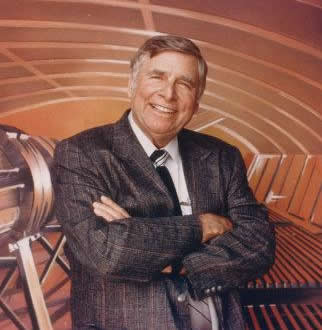
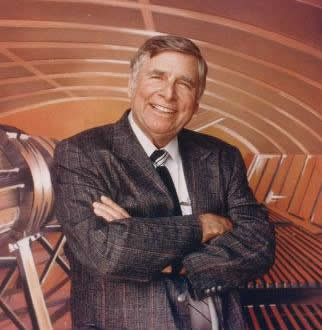
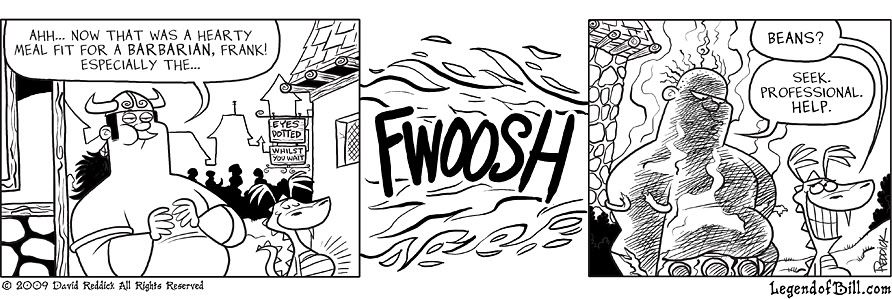
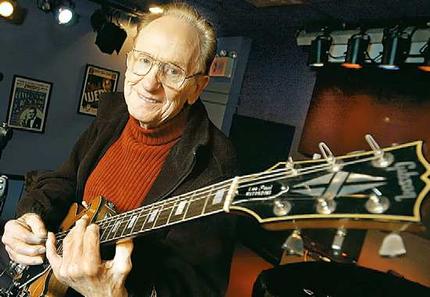

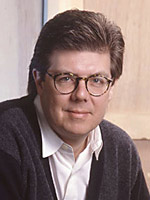

I love Startrekfans.net
in Ten Forward
Posted
Can you lend me a fiver?
Seriously, I'm really glad things are going well for you. You've been a great member at STF and I always enjoy reading your posts. Wishing you continued success.